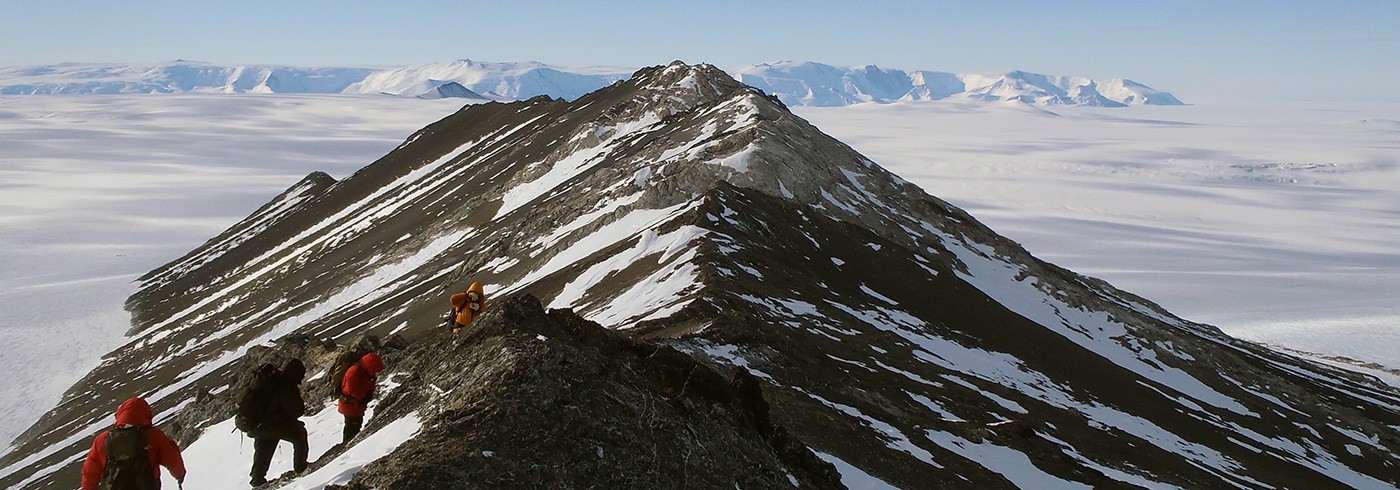Hot fossils in a cold land: early Cambrian stem group bilaterians from Antarctica
16 October 2011 - 4 December 2011We aim to describe, systematically and for the first time, the early Cambrian faunas of Antarctica, as well as their evolutionary and biostratigraphic importance.
Our main questions relate to the Cambrian explosion, i.e., the relatively sudden diversification of animal life on Earth around 542–500 million years ago. Many fossils that appear during this time represent the stem groups of modern animals, and studying their morphology, relationships, and ecology helps us understand how evolution shaped life during this pivotal time in Earth’s history. To accomplish this, we need to determine the age and biostratigraphic relationships of the fauna.
Our fieldwork consisted of five weeks’ sampling of lower Cambrian rocks along stratigraphic sections from two locations in the Trans-Antarctic Mountains: the Holyoake Range just north of Nimrod Glacier and the northern Churchill Mountains in the vicinity of Cape Selborne. These areas were selected because previous expeditions had recovered interesting fossil faunas from these isolated locations.
At both locations we collected macroscopic fossils (i.e., trilobites and brachiopods) and limestone samples for fossil extraction using acids. We completed detailed stratigraphic descriptions of sections and took samples for stable isotope stratigraphy to help determine the age and correlation of the sections. About 150 samples were collected from the upper Shackleton Limestone and the overlying Holyoake and Starshot formations.
Initial results derived from acetic acid dissolution of samples from the Shackleton Limestone indicate a moderately diverse assemblage of shelly fossils (see figure), including brachiopods (A–F), molluscs (G–J), and problematic fossils (I–N). This assemblage is similar to faunas described from King George Island, West Antarctica and the Stansbury Basin of Australia. This suggests a mid-Botoman age for the upper Shackleton Limestone.

Early Cambrian (Botoman) microfossils, Shackleton Limestone, East Antarctica: A–C, Eohadrotreta sp.; D–E, E. priscus; F, K. yorkensis; G, Pelagiella sp.; H, Parailsanella sp.; I, C. absonus; J, Yochelcionella sp.; K, D. odyessi.
The next phase of the project will entail analysing and describing the recovered fossils, including macroscopic forms, and analysing the stable isotope stratigraphy to confirm the dating and palaeogeographic significance of the Shackleton Limestone and provide a framework for analysing evolutionary changes among Cambrian animals.








